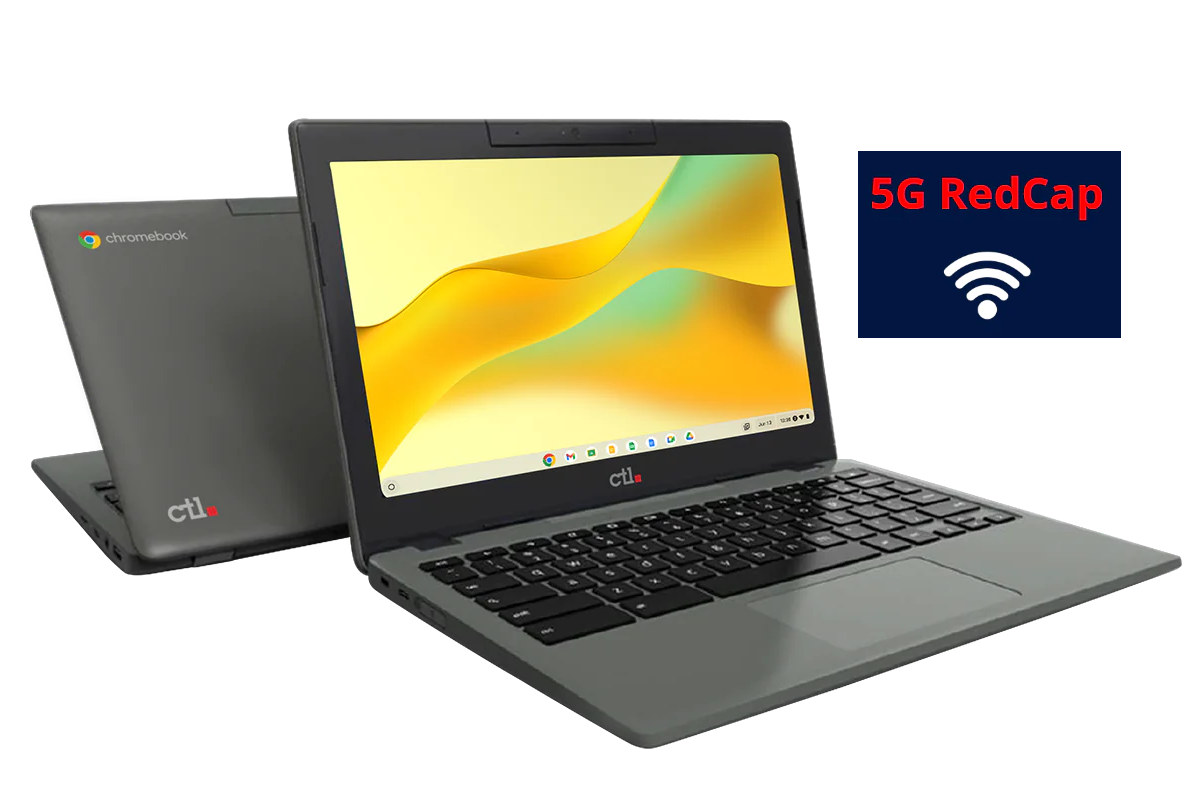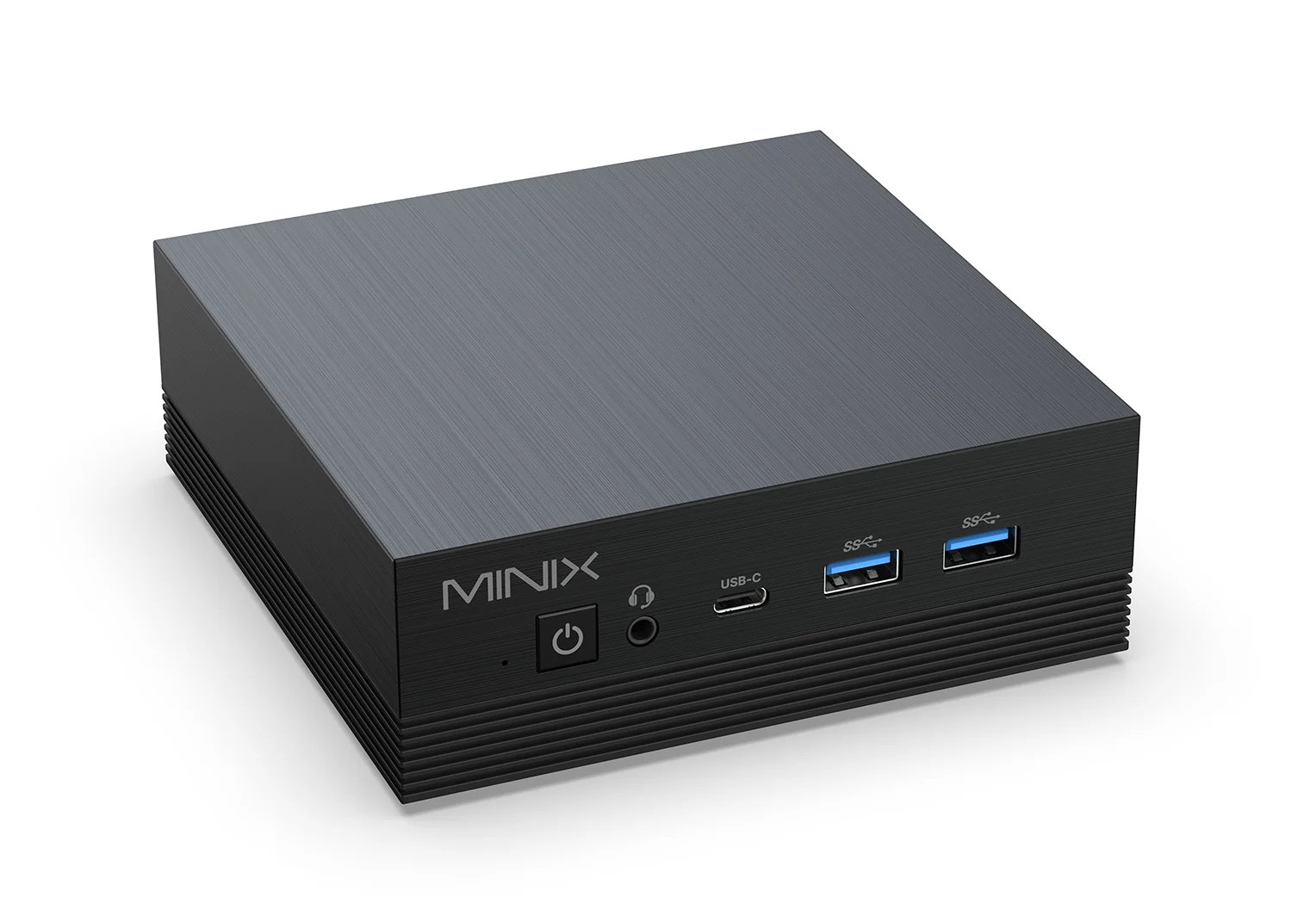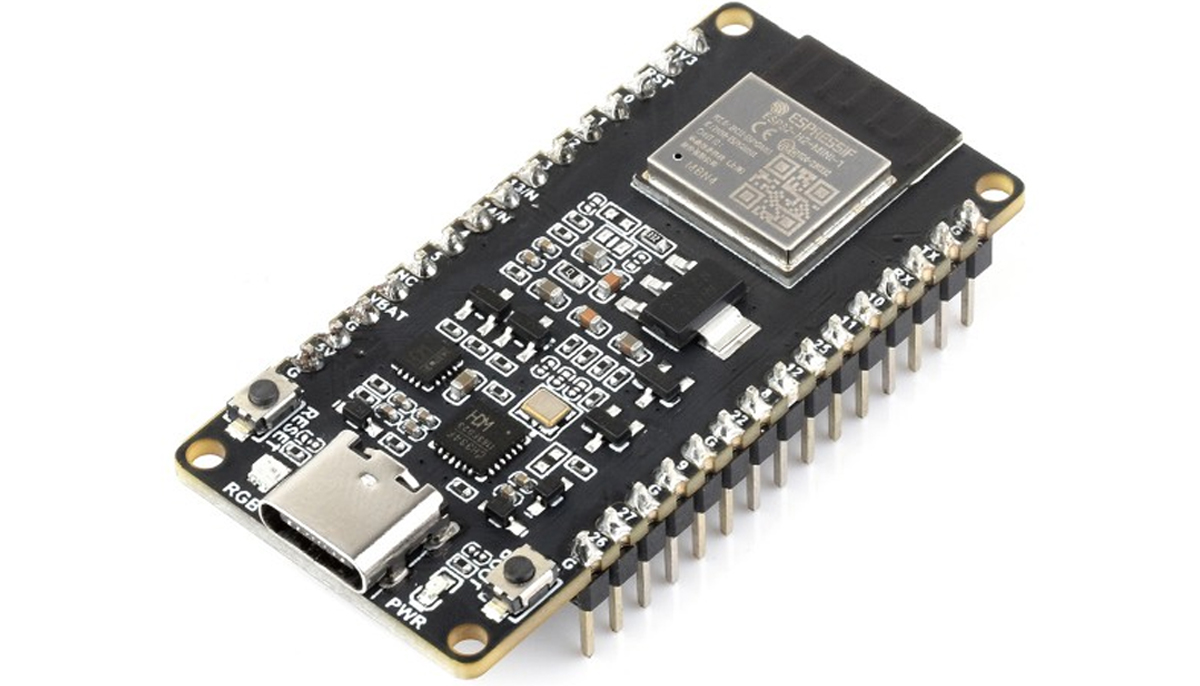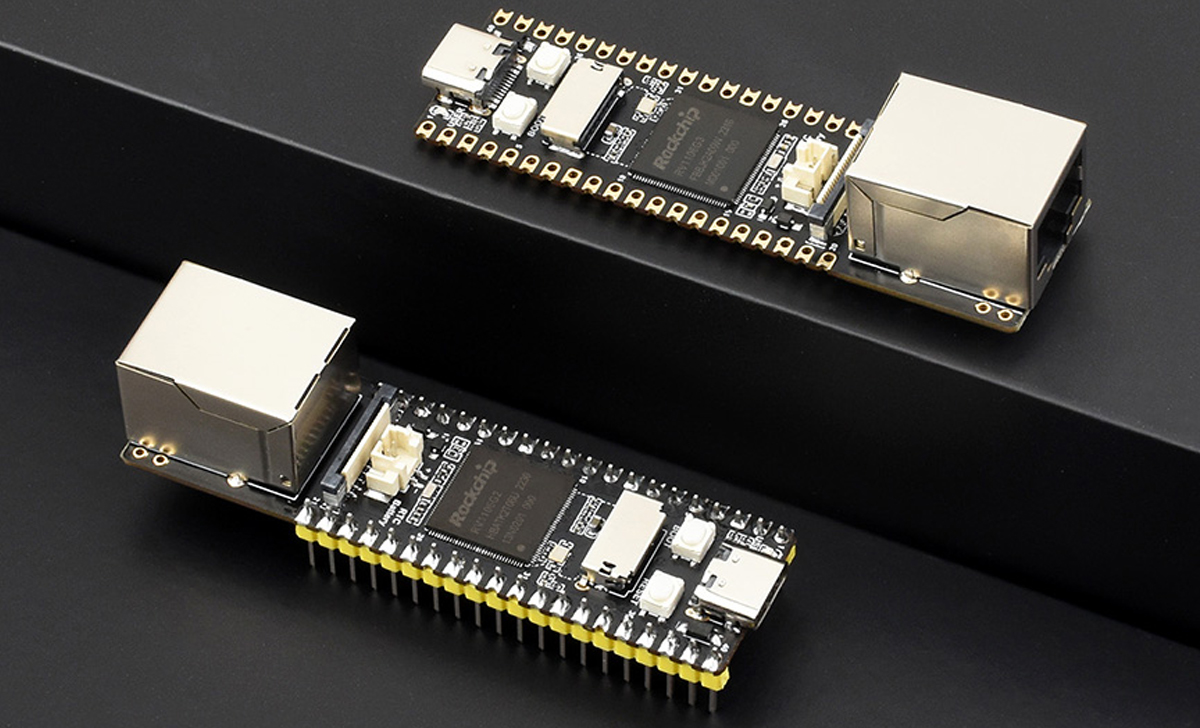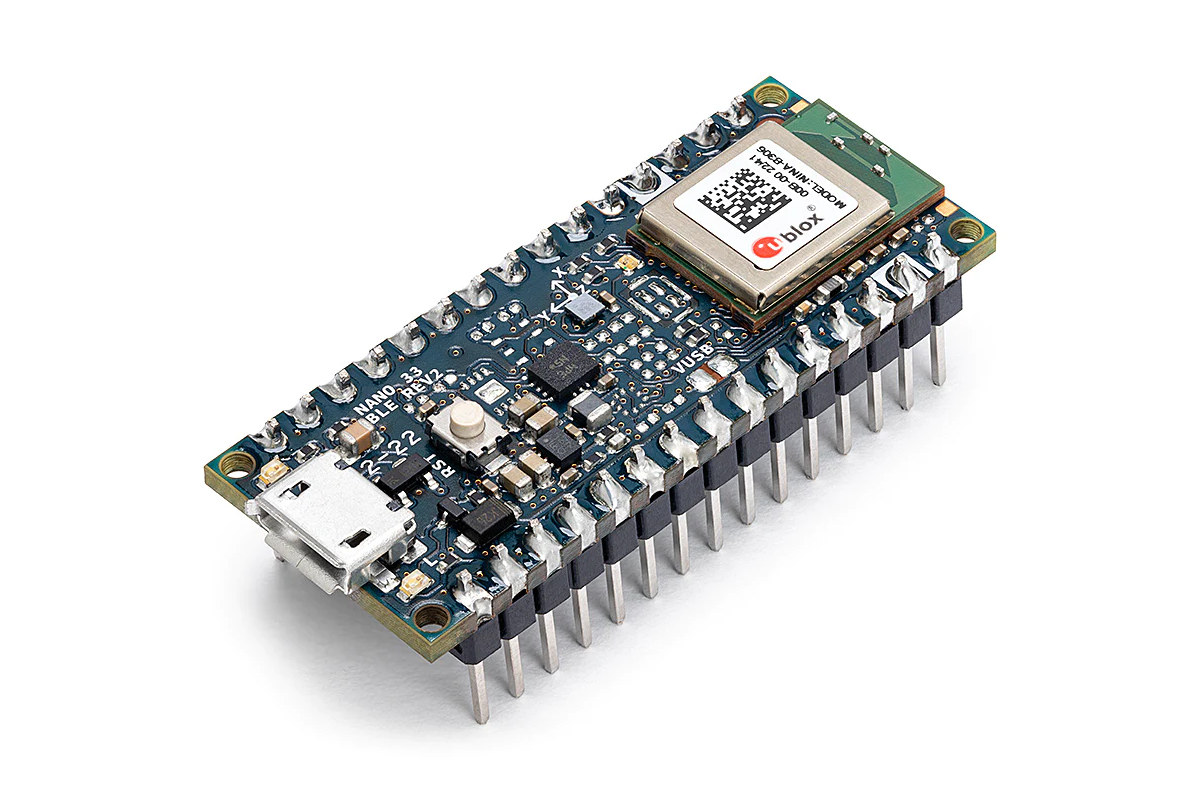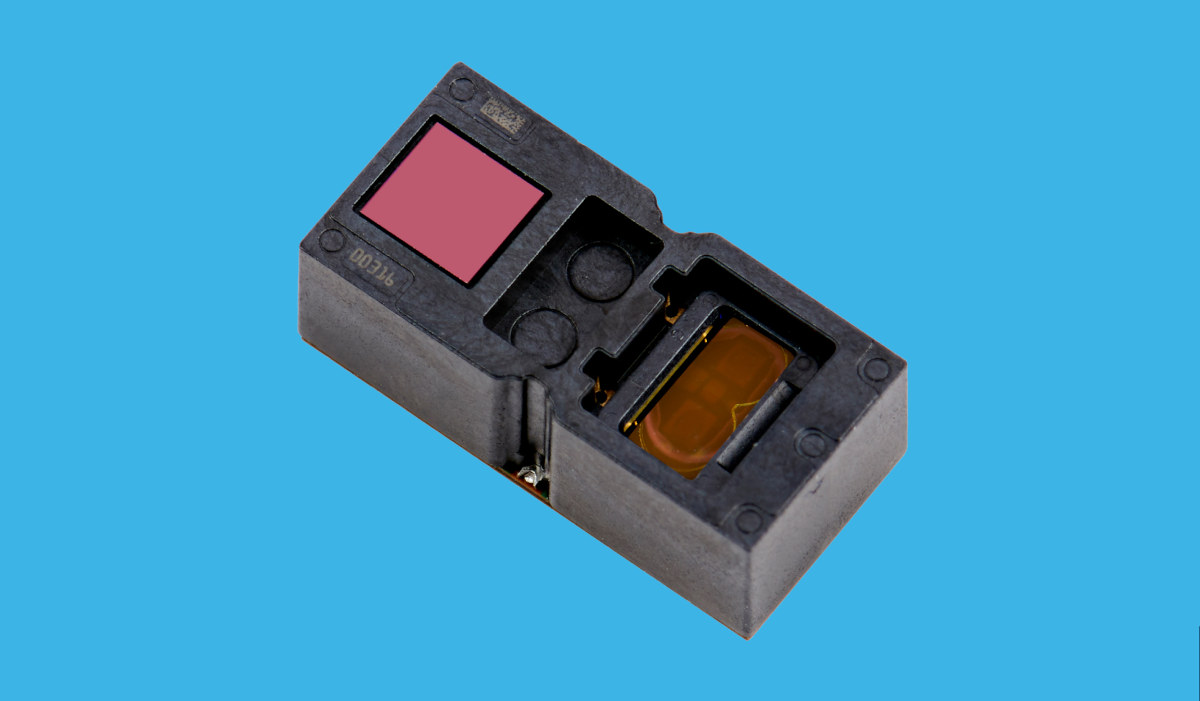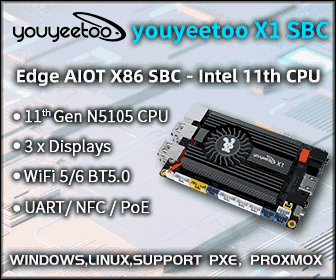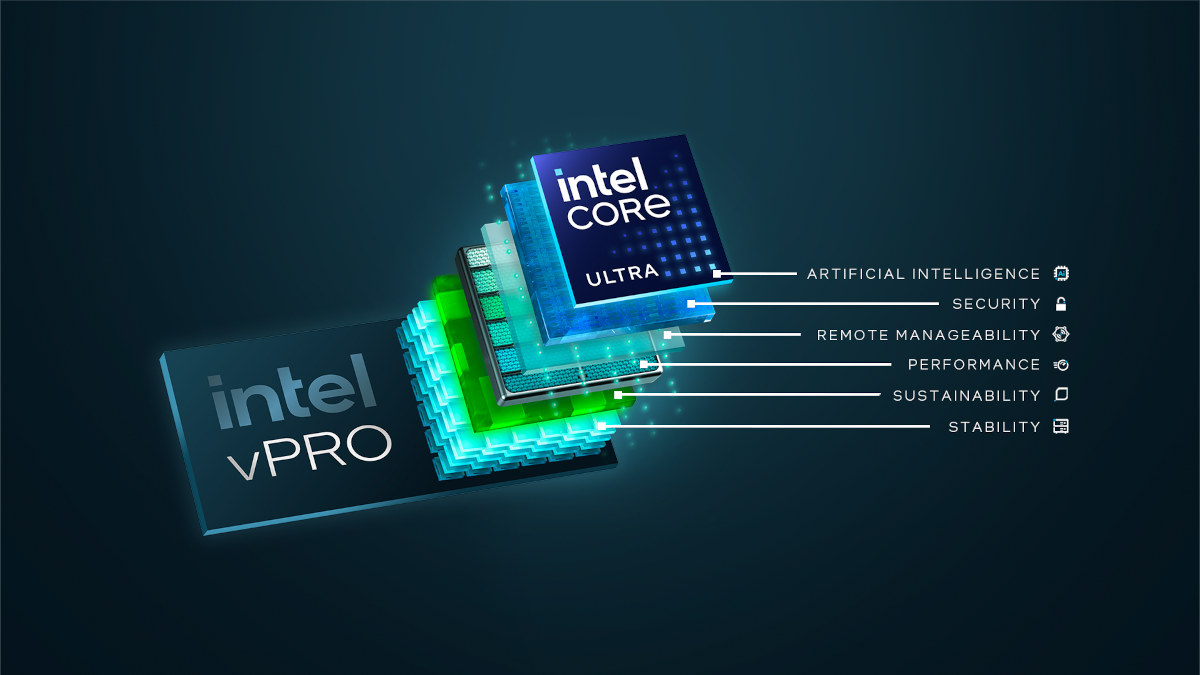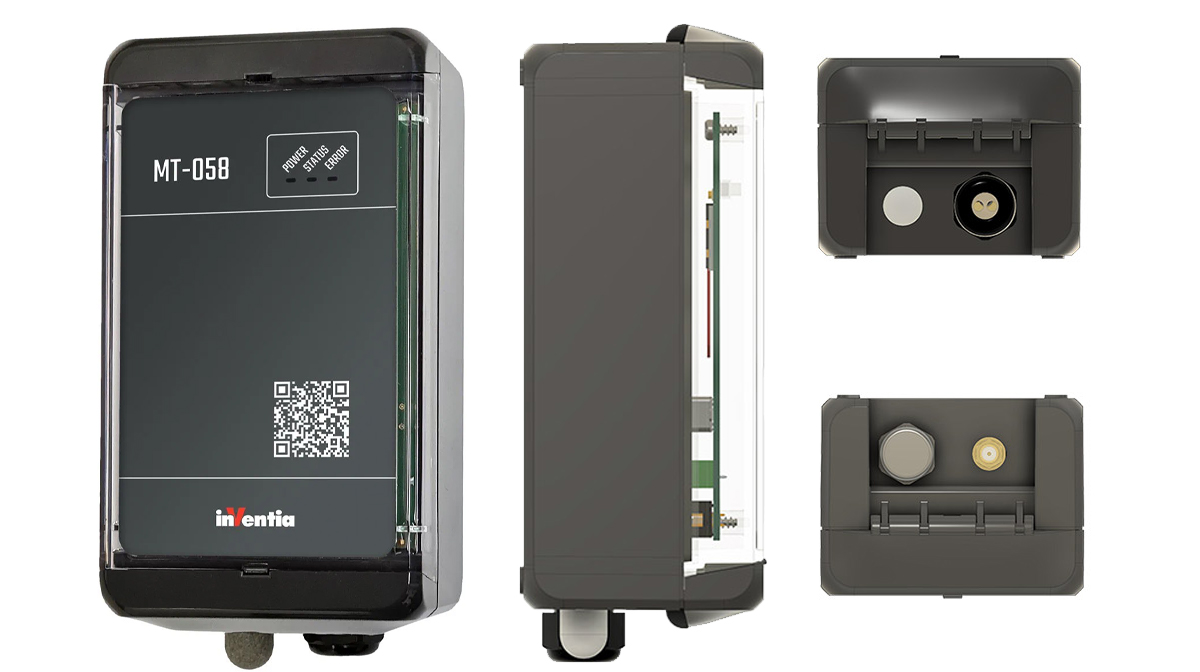CTL Chromebook NL73 Series based on Intel Processor N100 or N200 SoC will be offered with a Snapdragon X35 modem to support the new 5G RedCap (Reduced Capability) standard. 5G RedCap – also known as 5G NR-Light – keeps some 5G features such as low latency, low power consumption, enhanced security, and network slicing while limiting the bandwidth to around a few hundred Mbps. It was initially designed to target industrial IoT applications, but Qualcomm also mentioned its Snapdragon X35 modem could be used in smartwatches and XR glasses when it was first announced, and it might be used in other cost-sensitive devices such as Chromebooks. Chromebook NL73 “5G RedCap” key specifications: Alder Lake N-Series SoC (one or the other) Intel Processor N100 quad-core processor up to 3.4 GHz (Turbo) with 6MB cache, 24EU Intel HD graphics; TDP: 6W Intel Processor N200 quad-core processor up to 3.7 GHz (Turbo) with […]
MINIX Z100-AERO is an Intel N100 mini PC with triple 4K display support, dual Ethernet
The MINIX Z100-AERO is an actively-cooled Intel Processor N100 mini PC with a form factor similar to the company’s Z100-0dB fanless mini PC but offered with a different choice of interfaces including dual Ethernet (1Gbps + 2.5 Gbps), and three video outputs through HDMI 2.1, DisplayPort, and USB-C connectors. The mini PC supports up to 32GB DDR4 memory via a single SO-DIMM slot and M.2 NVMe SSD storage, and features four USB 3.2 Gen 1 ports (5Gbps), plus one full-featured USB-C 3.2 port, and a 3.5mm headphone jack. MINIX Z100-AERO specifications: SoC – Intel Processor N100 quad-core Alder Lake-N processor @ up to 3.4 GHz (Turbo) with 6MB cache, 24EU Intel HD graphics @ 750 MHz; TDP: 6W System Memory – 4GB, 8GB, or 16GB DDDR4-3200 via 1x SO-DIMM socket, upgradable to 32GB Storage 128GB, 256GB, or 512GB M.2 SSD (PCIe Gen3 x1?), upgradable up to 4TB MicroSD card slot […]
Waveshare ESP32-H2-DEV-KIT-N4-M – A Low-cost ESP32-H2 development board going for $6.65
The Waveshare ESP32-H2-DEV-KIT-N4-M is a development board based on the ESP32-H2, available for only $6.65 on Aliexpress, but you’ll also find it on Amazon and Waveshare’s official store. This is a significant price drop compared to last year’s official Espressif ESP32-H2-DevKitM-1 board, which was priced at $10 without including shipping costs and with a similar design. In 2021, Espressif Systems introduced the ESP32-H2 to the world. However, it wasn’t until 2023 that they released their first development board. Since then, there haven’t been many products built around this new module. Some exceptions include the Olimex ESP32-H2-DevKit-LiPo, LILYGO T-Panel, and the ESP Thread Border Router/Zigbee Gateway board, all of which feature the ESP32-H2 chip. Waveshare ESP32-H2-DEV-KIT-N4-M specifications: Wireless module – ESP32-H2-MINI-1 MCU – Espressif Systems ESP32-H2 32-bit RISC-V microcontroller at up to 96 MHz with 320 KB SRAM, 128 KB ROM, 4 KB LP memory, Bluetooth 5.2 LE/Mesh, and 802.15.4 (Zigbee/Thread/Matter) radios. […]
LuckFox Pico Pro and Pico Max – Rockchip RV1106 powered boards with 10/100M Ethernet and camera support
The LuckFox LuckFox Pico Pro and Pico Max are two new Rockchip RV1106-powered development boards that offer a Linux-based development platform for IoT applications. The boards feature 10/100M Ethernet, up to 256MB DDR2 memory, and a 0.5TOPS NPU for AI tasks. With support for Buildroot and Ubuntu 22.04, this board can be used for smart homes, remote monitoring, and other AI-enhanced projects. Last year, we covered the LuckFox Core3566, a Raspberry Pi Compute Module 4 alternative, and the LuckFox Pico with its RV1103 SoC which has a similar form factor and similar features to these new modules. But the new modules are built around the RV1106 SoC which features an Arm Cortex-A7 processor (up to 1.2GHz), a RISC-V co-processor, a 0.5 TOPS NPU for AI tasks, and a 4M @ 30fps ISP for high-quality image processing. LuckFox Pico Pro and Pico Max Specifications SoC – Rockchip RV1106G2 CPU – Arm Cortex […]
Arduino Nano 33 BLE Rev2 board features BMI270 six-axis IMU and BMM150 magnetometer
Arduino Nano 33 BLE Rev2 is an update to the Arduino Nano 33 BLE board launched in 2019 that features two IMU sensors instead of one with the BMI270 6-axis accelerometer and gyroscope and the BMM150 3-axis magnetometer and also comes with a few changes made after feedback from users. The new board is still powered by an nRF52840 Bluetooth LE module (u-Blox NINA B306) and remains Arduino Nano compatibility with two rows of 15-pin headers, but replaces the 9-axis IMU with the BMI270 and BMM150 chips, adds new pads and test points for USB, SWDIO, and SWCLK, a new VUSB soldering jumper, and brings changes to the power circuitry. Arduino Nano 33 BLE Rev2 specifications: Wireless Module – U-blox NINA B306 module SoC – Nordic Semi nRF52840 MCU Core – Arm Cortex-M4F microcontroller @ 64MHz Memory and storage – 1MB Flash, 256KB RAM Bluetooth 5.0 LE Up to 2 […]
STMicro VL53L9 is a high-resolution, direct Time-of-Flight 3D LiDAR sensor module
The STMicro VL53L9 sensor is the latest addition to the company’s FlightSense product family. The direct Time-of-Flight (ToF) 3D LIDAR (light detection and ranging) sensor offers a resolution of up to 2,300 zones. The module is described as all-in-one and easy to integrate. It comes in a small, reflowable package that contains all the necessary components for sensing objects and processing images. The sensor features an array of single photon avalanche diodes (SPADs) for photon detection, a post-processing SoC, and two vertical surface emitting lasers (VCSELs) powered by a dedicated bipolar-CMOS-DMOS (BCD) VCSEL. The VL53L9 is a multi-zone ToF sensor similar to the VL53L7CX and the VL53L8, meaning that it offers multi-zone distance measurements up to 54 x 42 zones with a wide 54° x 42° field-of-view. Unlike most IR sensors, the VL53L9 sensor uses backside illumination direct ToF technology to ensure absolute distance measurement, regardless of the target color […]
Intel Core Ultra 5 134U and Core Ultra 7 164U are 9W Meteor Lake processors
Intel Core Ultra 5 134U and Core Ultra 7 164U are new 12-core Meteor Lake processors with 9W PBP (Processor Base Power) and 30W Max Turbo Power (MTP) that appear to have recently been added to Intel Ark. Intel just announced Intel vPro Platform support for the Core Ultra Meteor Lake processors to make those more suitable to business customers with improved security through AI-powered Intel Threat Detection Technology, better manageability with the Intel Device Discovery comprised of cloud-based tools for managing PCs remotely, and enhanced stability thanks to Intel’s Stable IT Program aiming to validate and ensure Windows 10 and Windows 11 compatibility. But Liliputing also notes that Intel has added some 9W parts besides the existing 15W parts such as the Intel Core Ultra 5 125U or Core Ultra 7 165U, namely the Core Ultra 5 134U and Core Ultra 7 164U. They are quite similar to the […]
Inventia MT-058 cellular IoT telemetry module is powered by Nordic Semi nRF9160 SiP
A few days back, Inventia introduced the MT-058 cellular IoT telemetry module built around Nordic Semiconductor’s nRF9160 System in Package (SiP) module with support for LTE-M/NB-IoT connectivity with GNSS. The device is designed for low-power, battery-operated industrial applications such as water metering and environmental monitoring. The module is IP68-rated and offers a combination of digital and analog inputs. It also comes with a battery that can last up to 5 years and there is also support for external sensor attachment for data logging applications. MT-058 Cellular IoT telemetry module specification: Nordic nRF9160 SiP with 64 MHz Arm Cortex-M33 application processor with 1 MB flash, and 256 KB RAM Connectivity – LTE Cat M1 and NB-IoT SIM card options – Standard 2FF SIM card slot, with an option for a soldered Machine Identification Module (MIM). Antenna – SMA connector for attaching an external antenna. Inputs – 5 inputs for counters, up […]


